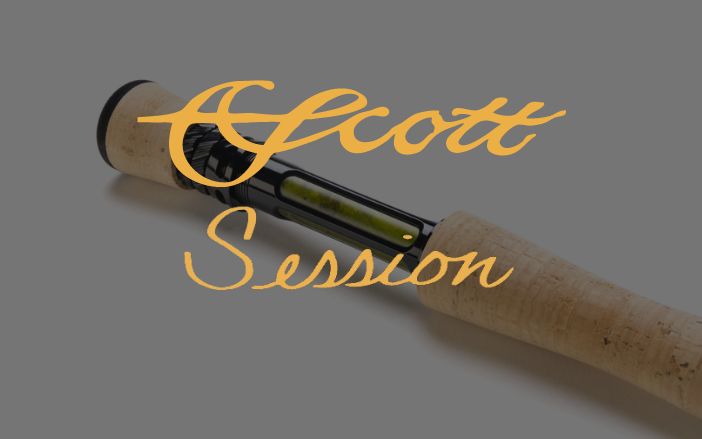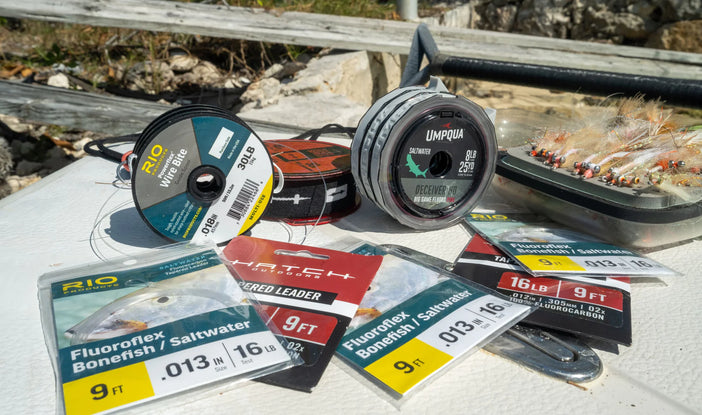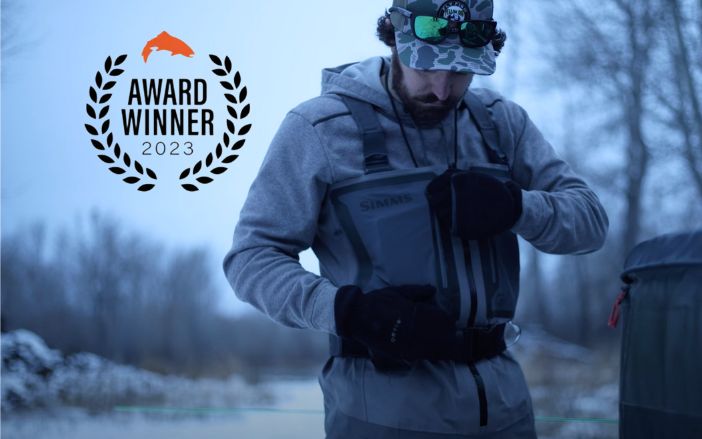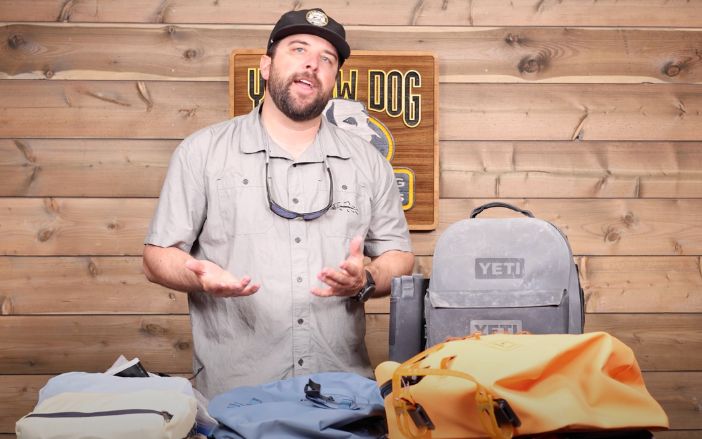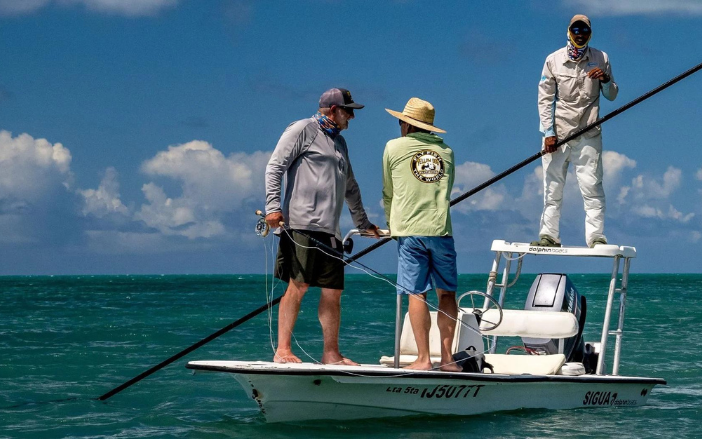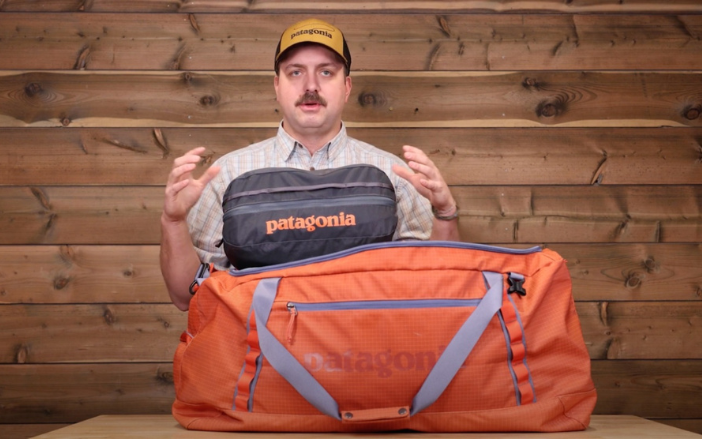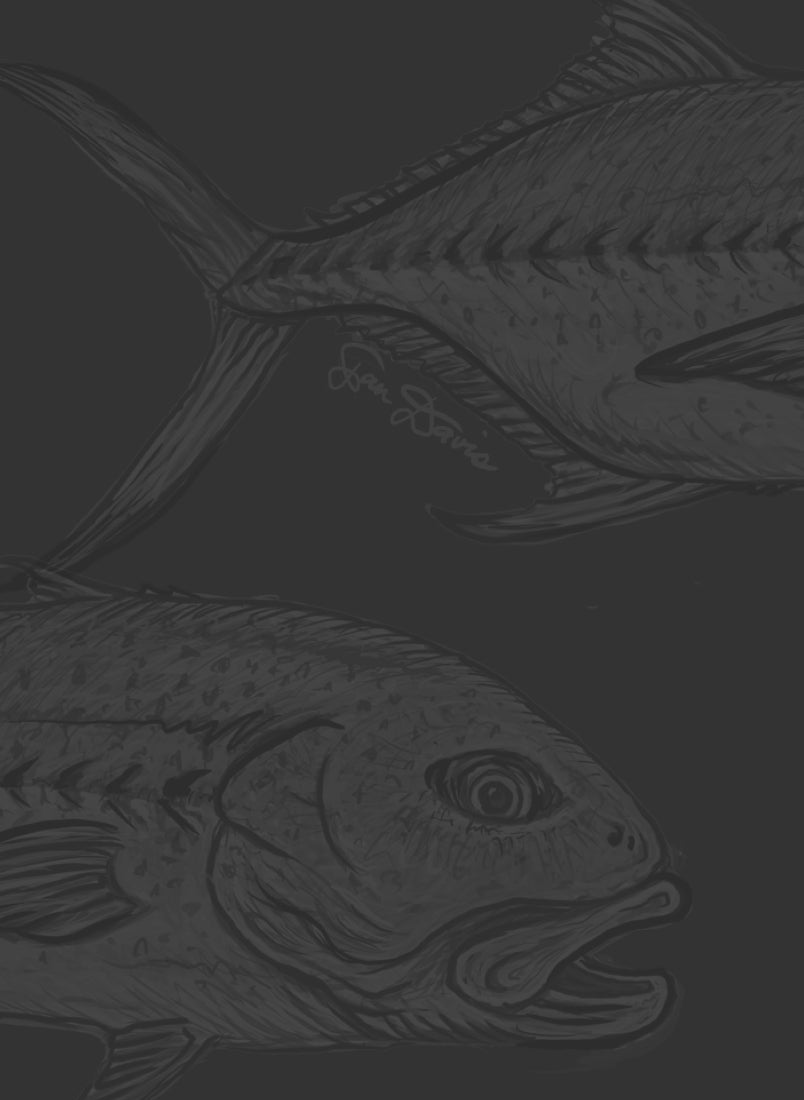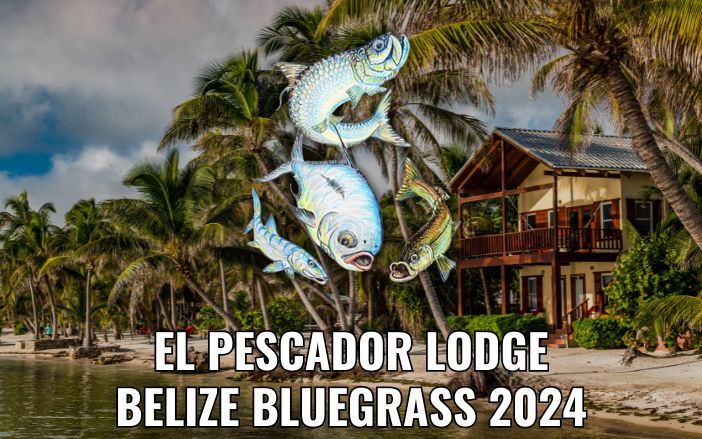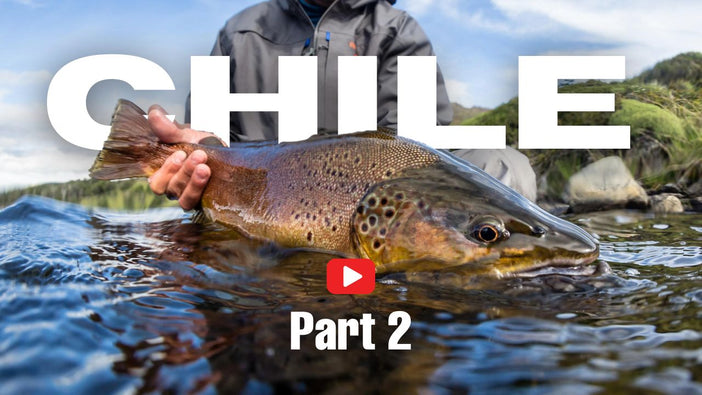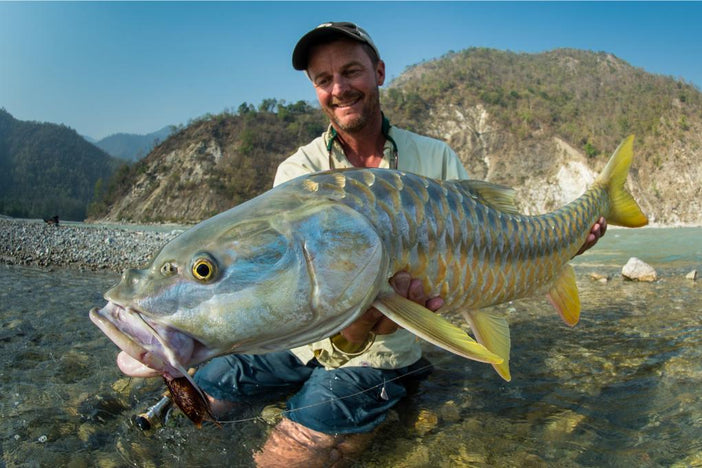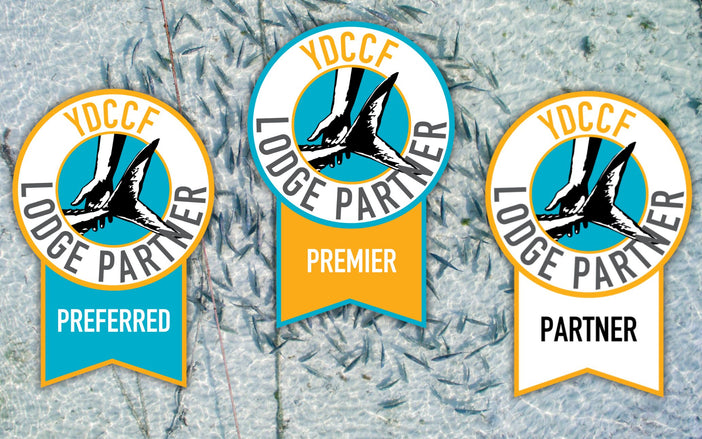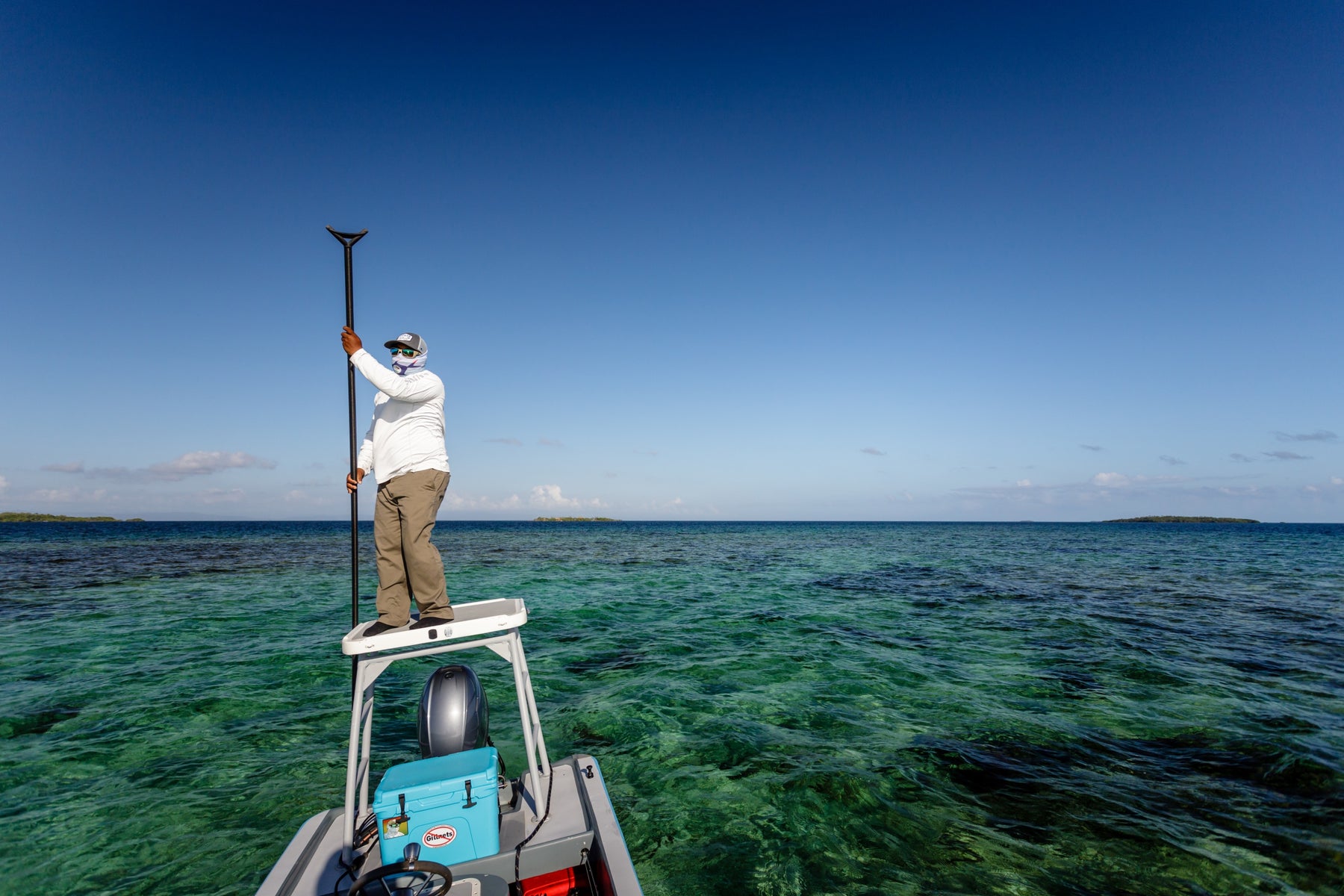Saltwater fishing presents a number of challenges: Unpredictable winds, wary fish, and difficult casts, but the thrill it offers is undeniable. Instead of focusing on what you cannot control, the key is to focus on what you can, such as your casting ability, fly selection, and gear. With that in mind, one important element to any successful saltwater fly fishing trip is your clothing: Dressing in the right gear from head to toe is crucial to staying comfortable, focused on the fishing, and well camouflaged.
Saltwater Clothing Colors: What Should You Wear?
It’s important that when choosing your flats outfit you take color into consideration. Brightly colored or flashy clothing is a big no-no, as they stand out like a sore thumb on an otherwise neutral flat.
Despite what you might think, its common to be saltwater fly fishing in close proximity to the fish, or to have a fish track your fly all the way to the bow. In these situations, you want to blend in with the surrounding environment, or else risk spooking the fish. Your favorite lucky red ballcap will send a once happy bonefish fleeing to deeper water, so leave it back at the dock.
Neutral colors such as light blues, greens, and tans or a combination of them all do well to break up your silhouette. You can even go as far as to pair your shirt with the color of your surroundings depending on the type of bottom you are fishing over. If you are in the Bahamas fishing over white sand flats, a pale gray or tan will work well, while a light olive is ideal for fishing over turtle grass, though this isn't necessary.
Sun Protection While on the Flats
Fly Fishing Shirts
The number one reason for choosing good gear is protection from the elements. By nature of flats fishing, anglers are subjected to long days of direct sunlight, as well as its reflection off of the water. Its also important to mention that the sun's rays are stronger closer to the equator, meaning it takes less time to burn!
Take it from us: Nothing ruins a trip like getting sunburnt on the first day, leaving you to tough it out the rest of the week. Furthermore, if you’re fishing for several days or up to a week or more, cumulative exposure to the elements adds up. For that reason, be sure to pack a long-sleeved shirt that protects your arms from the sun.
There are tons of options on the market from major brands such as Simms, Patagonia, Orvis, Yellow Dog branded apparel, and more. You can opt for a button down or a sun shirt, which are made from lightweight, breathable, and moisture-wicking materials. Most sun shirts and hoodies offer protection up to UPF 50, which is a great asset for staying protected.
Furthermore, a sun hoody will offer added sun protection for your neck and cheeks. Features such as extended sleeves and thumbholes keep the tops of your hands protected, and these materials dry quickly for remaining comfortable and to limit chafing for when you inevitably get wet.

Fly Fishing Pants
It can be tempting to just pack a pair of shorts: It’s beautiful and warm out, and for anglers traveling from cooler climes, you're hoping to soak up as much of the sun as you can. However, this can quickly go awry, so be sure to pack a pair of long fly fishing pants as well. It won’t take long for your bare legs to get roasted from the sun standing on the bow, especially in sensitive spots such as your calves or the underside of your knees. This can make walking or even lying down uncomfortable, and is a sure-fire way to put a damper on your fishing.
Even with sunscreen on, wearing shorts is still a big risk. It is very easy to get distracted when searching for fish and you inevitably forget to reapply, and it will also quickly wash off if you are doing any wading. For this reason, pack multiple pairs of long, quick-dry, breathable pants to protect your legs from the sun.
If you have laundry service where you are staying, simply wash a set of clothes each afternoon. If you don't, a simple solution is to take your clothes with you into the shower each evening to rinse out the day's sand and salt. Leave these to dry the following day and alternate pairs throughout the week.
Sun Masks and Neck Gaiters
Some sun hoodies do a great job of protecting your ears, neck, and portions of your cheeks, but there is still a lot of real estate there for the sun to hit.
We recommend bringing along a couple of Buffs or sun masks to help keep your neck, cheeks, ears, and nose safe. There are plenty of good options on the market, and they are a cheap investment for staying burn-free. As a side note, you should still be applying sunscreen when using a buff. They are stopping some, but not all, of powerful UV rays.
An additional feature of sun masks is they are a quick and easy way to secure your hat when making runs in the boat, as well as keeping your sunglasses snug.
Sun Gloves
Putting sunscreen on the backs of your hands should be second nature. There’s a reason most guide’s hands are darker colored than the rest of their body -- they’re in the sun all day long, season after season.
But for someone who takes a few trips a year to the flats, sun gloves offer an additional layer of protection and can keep your mitts from becoming crispy red nubs.

Not only will the gloves protect your hands, but they'll also act as a stripping guard from line burn. Its common to strip the line over the same indentation on your finger, and this area can wear down quickly over a couple days of fishing to leave an open sore. Furthermore, many saltwater fish are known for making gut-busting runs which can lead to some pretty gnarly instances of "line burn." Sun gloves are an easy way to prevent these issues.
Even if you don't like the feel of gloves or want to be able to feel your line in your hands a bit more, bring a pair along. By day four or five of fishing in the tropics, you may be wishing you had them. They take up very little space and are adding virtually no weight to your luggage -- If you need them, you'll be glad you brought them along.
Fly Fishing Hats
This should go without saying, but never leave home without a hat or two. A good cap that keeps the sun off your face is invaluable. Your forehead will be thanking you when the end of the week comes around. It isn't uncommon for some hats to shrink from increased exposure to the sun, so keep this in mind when packing your favorite cap.
One other important element to consider is the underside of your hat's brim -- a darker brim will reflect less light and minimize glare.

Fly Fishing Jackets
A good rain jacket is one of the first pieces of apparel we pack for most any trip. Its common for squalls to pass through, quickly drench the area, and leave behind a remarkable calm. These low-pressure systems can sometimes even improve the fishing!
When it does rain, you'd be surprised how cold you can become while making runs to the next fishing spot and a rain jacket solves any issues. It will also provide added protection for your essentials in a pinch if you aren't able to tuck your things away in the event of a sudden downpour.
Saltwater Wading Boots
Not all destinations require wading boots, but for those that do, they are non-negotiable. They offer added support and protect your feet from the sun, but more importantly, they offer protection from rocks, coral, and wildlife such as urchins.
There are plenty of options on the market, and you should consider what type of fishing you will be doing before making a decision. If you are only wading periodically, a slip-on bootie might be your best option so you can quickly take them on and off.
If you are going to be wading extensively, solid ankle support is highly recommended. In this instance, opt for a taller boot with laces so you can tighten and loosen as needed.
Finally, pair your boots with a neoprene wading sock or gravel guard to keep debris such as sand, coral, and grass out of your boot!

Protecting yourself from the elements is an easy step to take toward having a great trip. If you have any questions or need suggestions on gear, don’t hesitate to contact Yellow Dog and any of our team members will be more than willing to help.
Destination Gear Guides:
Related Articles:






